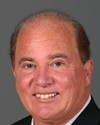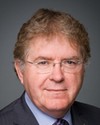You are right. As you know, Canada is to submit its case in 2013. Denmark will do the same in 2014, I believe. We don't know how long the commission will take after that. I have seen estimates ranging from 5 to 10 years in order to rule on the different requests, so I have the impression that it will take some time.
However, the encouraging thing is that there is a great deal of advertising on the scope of natural resources, that is ore and energy, in the Arctic Ocean. The United States Geological Survey published a study last year identifying the energy resources in the Arctic Ocean. According to my interpretation of this study, their outlook is overly optimistic.
For example, to calculate their estimates of oil and natural gas reserves, they considered, among other things, the entire Davis Strait as being a continental margin type of geological feature, whereas that is not the case. A large part of the Davis Strait seabed is actually oceanic crust, and this type of geological feature does not contain oil or gas. So that's why I'm saying that the United States Geological Survey estimates are overly optimistic.
The other thing to keep in mind is that the majority of energy resources will be found near the coast, simply because that is where the thickest sedimentary rocks are found. These rocks are what make up the continental shelf. That is where oil and natural gas companies traditionally explore, because that is where the majority of these reserves are found. There might be a bit more in the slope, but the farther they get from the coast, the less likely they will be to find anything.



